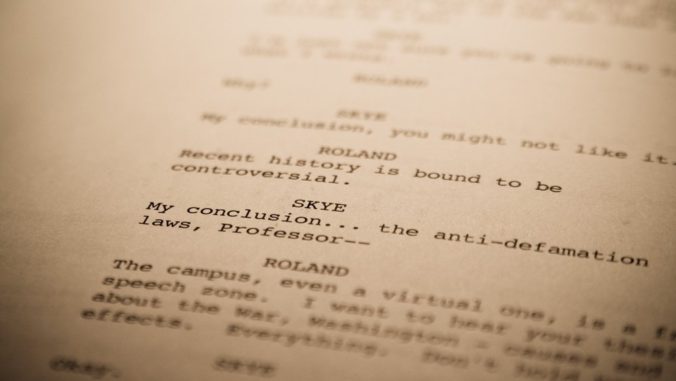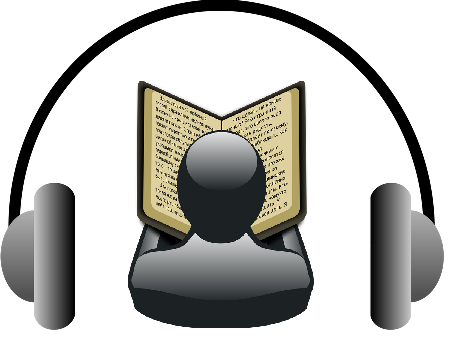If you want to be a writer, there are six words that you need to memorize above all else. You need to tape them to your wall, tattoo them on your arm, and teach them to your parrot until it repeats them back to you a hundred times per day. You need to pay skywriters to draw them in the sky above your house and hack your cybernetic ocular display so that they hover in front of you wherever you go.
Are you ready? Here are the six words.
First drafts suck, and that’s okay.
“Oh, sure,” you say. “I know that.”
Yeah, but do you really? The extraordinarily, depressingly huge suckitude of first drafts is hard to grasp. It’s like comprehending the size of the universe: you expand your mental image until it’s a hundred billion times larger than anything you could possibly think of, and then just to be on the safe side you multiply that by a hundred billion, and then you find out that in reality it’s a hundred billion times larger than that.
Just to be clear, the idea isn’t that your first drafts suck. Or that first drafts of beginning writers suck. It’s that all first drafts suck. By anyone. Anytime. Ever. When you write a craptastic first draft, not only are you not alone, you are in the company of literally every writer who ever lived. The first day some primitive human decided hey, that’s a good story, I should invent writing so that I can write it down was the first day that a sucky first draft was written. Homer wrote them. Shakespeare wrote them. Hemingway, Faulkner, Joyce. You name ‘em, and I promise that they’ve written catastrophically bad first drafts.
First drafts suck, and that’s okay.
At some point people start to realize that writing involves multiple drafts, and that the final words of books they read do not spring from writer’s fingers like Force-lightning. (This is sometimes hard for kids to grasp—I’ve spent several conversations trying to explain to my seven-year-olds why I’ve written multiple drafts of one book. “You mean, you just write the same book over and over?”) But even once people acknowledge that rewriting is a part of writing, they still generally believe that a first draft is just a slightly-unpolished version of the final product, as if all that’s necessary is to sandpaper a few rough edges and paint over the odd mistake.
Nope.
First drafts suck, and that’s okay. Because the point of a first draft is not to be an actual coherent story. The point of a first draft is to start getting the various bits and pieces of a story down onto paper so that you can look at them and see what they are. (“Oh, hey, looks like I wrote a story about were-rat jewel thieves from Flanders.”) You get it all down, you write something that looks approximately-kinda-sorta something like a book, and then you step back and figure out what story you actually want to tell. Because a lot of the time, you discover that the story you end up wanting to tell isn’t the same one that you started out with.
Let’s take a little side-journey into metaphor-town. Imagine that a story is like a blanket. Maybe it’s the sort that your grandmother might knit for your living room couch, or maybe it’s a little warm blanket for a baby bed. Whatever it is, you can see it in your head, and so you brew a pot of coffee and you sit down to knit. You stretch your fingers and you get out your knitting needles.
And then you realize that you don’t have any yarn. You don’t even have thread to spin into yarn. You don’t even have cotton to spin into thread, or plants that might grow cotton that you could spin into thread.
What you have is a field and some seeds. You plant those seeds, and you water them, and you fertilize them, and many moons later you have some full-grown cotton plants. You pick that cotton, and then you spin the cotton into thread, and then you spin the thread into yarn.
Once all of that is done, you cast your mind back to that day you sat down to knit, and you remember that your goal wasn’t to produce piles of yarn. So you brew some more coffee and sit back down and knit that yarn into your blanket.
After all of that is it any wonder that the blanket you come up with looks like crap? You’d planned for it to be nice and square, but one side is longer than all of the rest. Some of the threads of yarn stop and start or change color or just disappear altogether. There are giant holes where you forgot to knit anything at all, and one corner is knit so tightly you’re pretty sure you could stab someone to death with it.
But that’s okay. Because what can be knit can be unknit and knit again.
See, you don’t need a cotton field to write a second draft. You’ve already got all the stuff you need right there. Just pull your first draft apart until you’ve got a giant pile of yarn and then start knitting it together again. You’ll need to add some thread here and there, and you’ll throw away so much yarn that your trash can will look like you slaughtered a coven of Muppets. (The More You Know™: ‘coven’ is the correct collective noun for a group of Muppets). But now that you can concentrate on how the knitting will look instead of spending all your time wresting thread from the earth, that second draft will be easier. Oh, will it be easier.
The corollary to the first drafts suck mantra is this: revising makes good. Just as people have a hard time realizing how bad first drafts can be, they don’t quite realize how much a story can be improved through the process of revising. Your non-writer friends might read your first draft (if you let them, which you shouldn’t) and drop polite hints about how the restaurant on the corner is hiring servers. Your writer friends who read your first draft (if you let them, which you probably still shouldn’t) will squint at it, hem and haw, and then say “sure, there’s a story in here somewhere.” It’s a first draft; it sucks. But your second draft will be better, and your third better still. If you can improve your story with every draft, then all you need is time.
You sometimes read about how a particular writer published the first book they ever wrote, while another, just-as-successful author wrote eight novels before they got one into print. That first writer isn’t necessarily any better than the second, and they probably didn’t write any fewer drafts overall. Some people write umpteen drafts of the same novel because they really want to tell that story and get it right. Other people write two or three drafts of several different novels, because by the time they’ve rewritten one story a few times, they have a new idea that they want to try out.
Either way, in the end, two things are still true. First, by the time they’ve learned how to tell a good story, they’ve written a lot of drafts.
Second, their first drafts sucked.
And it was okay.
from the you-should-have-read-the-first-draft-of-this-post dept





